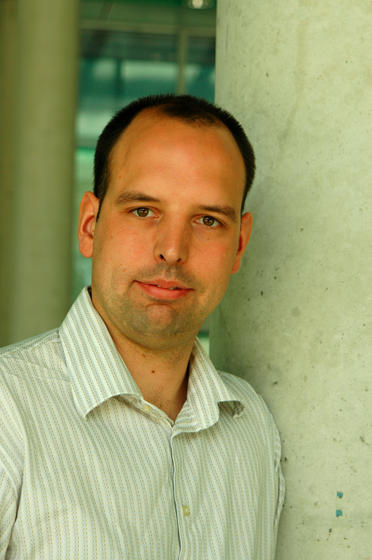Me research
includes the following areas:
- In a certain sector, M-Theory is described
by a quantum mechanical matrix model. Using perturbation theory one can
compute scattering amplitudes and compare these to graviton scattering
in supergravity. This is laid out in my PhD
Thesis which summarises
several papers. One of these studies
rather general dynamics of moduli
and has recently been of use in cosmological models.
With Hermann Nicolai we wrote lecture notes on the
M(atrix) model and supermembranes.
- At small scales, one expects space-time
manifold to resolve and to be replaced by a more general structure like
non-commutative geometry. The non-commutative torus is a particularly
simple example. Due to "Morita equivalence", it can have different
descriptions that are physically equivalent. This we used to
investigate continuity
of scattering amplitudes on the parameter of
noncommutativity, how a
commutative theory can be dual to one with
UV/IR-mixing and how to generalise
SU(N) gauge theory to noncommutative
spaces (seminar
slides). In this paper we showed that non-commutativity at
small scales has effects at macroscopic distances due to quantum effects. This casts serious doubts on the phenomenological usefulness
of non-commutative theories.
- The most general solutions of branes are
hard to find, but those that preserve some supersymmetry have a simpler
description due to BPS
equations. We used these to investigate brane splitting and
joining transitions in the dual gauge theory (seminar
slides). This has applications in the stringy Higgs mechanism, G2
manifolds and N=1 theories in general.
- Besides string theory, people use "loop
quantum gravity" to approach the quantisation of gravity. We worked out
the similarities and differences of the two approaches in the solvable
worldsheet theory of the bosonic string which is a non-trivial yet
tractable diffeomorphism invariant theory (seminar
slides). More recent papers in this direction are here
and in particular, covering loop cosmology and non-renormalizability of loop gravity, here.
- Entanglement entropy, if not the underlying mechanism, is a toy model for the origin of the Beckenstein entropy
of black holes. In this paper we studied the violation of the area law for fermionic entanglement
entropy by proving a special case of a conjecture by Widom.
- As a summerstudent I joint the protein
folding group at the NEC Research Institute in Princeton, NJ. There, we
found an
explanation why natural proteins have secondary structure:
This makes them better designable! This paper was published in Science
and has 420+ citations according to Google Scholar.
SPIRES citation search (does not list papers on protein folding and mathematical physics).
|
 Robert
C. Helling
Robert
C. Helling  Robert
C. Helling
Robert
C. Helling